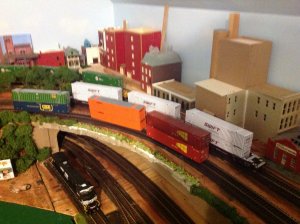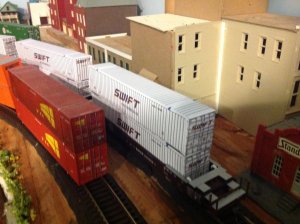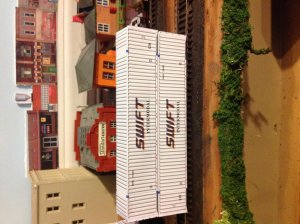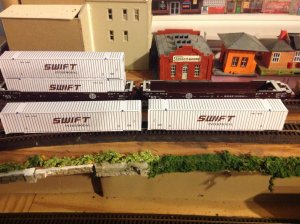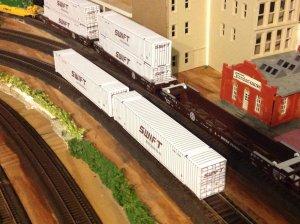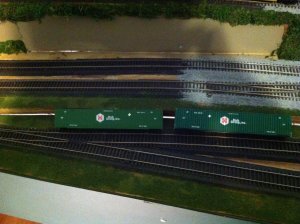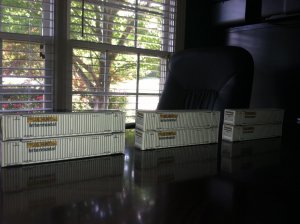I just built my first 6 53' Ho scale intermodal containers. In think I'll be building more. Takes about 1 hr to print, cut out, and glue 6 together,
Cost:
1. new ink for inkjet printer $22 off eBay
2. 50 sheets high quality photo paper $12
3. PDF file from Digcom $5.95
Total = $39.95 for potential 50 containers
Compare that to retail $35-42 for 3 plastic ones.
I'm impressed with them. In the first picture in the foreground are plastic RTR containers. The Swift ones are the paper printouts.
Here's the site. http://digcomdesigns.wix.com/shop
I couldn't get their catalog to work today, but when I viewed it last week it was great...lots of options.
Brad
Cost:
1. new ink for inkjet printer $22 off eBay
2. 50 sheets high quality photo paper $12
3. PDF file from Digcom $5.95
Total = $39.95 for potential 50 containers
Compare that to retail $35-42 for 3 plastic ones.
I'm impressed with them. In the first picture in the foreground are plastic RTR containers. The Swift ones are the paper printouts.
Here's the site. http://digcomdesigns.wix.com/shop
I couldn't get their catalog to work today, but when I viewed it last week it was great...lots of options.
Brad

